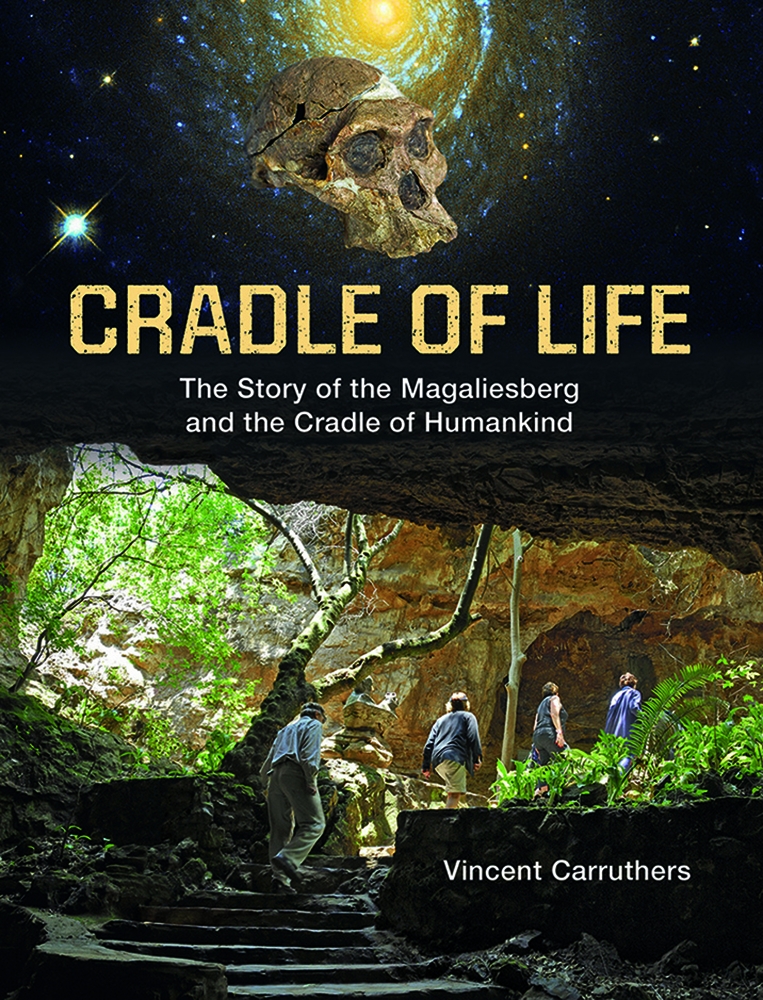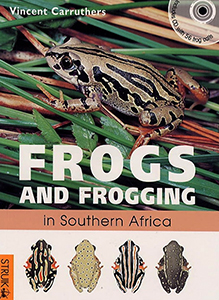The wildlife of Southern Africa: The larger illustrated guide to the animals and plants of the region

The wildlife of Southern Africa: The larger illustrated guide to the animals and plants of the region, by Vincent Carruthers. Struik Publishers. Cape Town, South Africa 2008. ISBN 9781770071995 / ISBN 978-1-77007-199-5

Images taken from The wildlife of Southern Africa: The larger illustrated guide to the animals and plants of the region, by Vincent Carruthers.
The distribution information provided with each description in Vincent Carruthers's The wildlife of Southern Africa: The larger illustrated guide to the animals and plants of the region is, of necessity, very limited. Its precision is greatly improved if read in conjunction with the habitat information given. The application of these terms is shown on the distribution notation map. References to the provinces of South Africa have deliberately been avoided because at the time of going to press some of the names and borders may still be subject to change.
Distribution notation:
Terminology: For every plant or animal described, the scientific name and the English name (if there is one) are given. Where there has been a recent change in the scientific name, the earlier name is given in brackets. Scientific nomenclature is associated with the system of classification (see Arrangement of contents above). The scientific name of a species of animal or plant always includes the genus (spelt with a capital letter) and the species (spelt with-out a capital), both written in italics, e.g. Passer meianurus, Cape sparrow. Names of families, orders and classes are not written in italics even though they are latinised, e.g. Ploceidae, the family to which sparrows, weavers and others belong. English common names exist for most familiar plants and animals and many people find these easier to remember than scientific names. The widely used names also tend to remain unchanged whereas scientific ones are constantly under revision as our understanding of taxonomic relationships expands. However, common names are subject to the whims of their users and different local names for a single species often occur. Technical biological terms have been kept to a minimum in this book but are sometimes unavoidable if accuracy and brevity are to be maintained simultaneously The glossary on p. 282 and the morphological diagrams at the beginning of chapters should allow readers to understand any unfamiliar words.
How to use: The wildlife of Southern Africa: The larger illustrated guide to the animals and plants of the region
The objective is to identify a plant or animal that has been observed.
Step 1: Become familiar with the sections of the book in advance. In particular, learn which characteristics to look out for by reading the introduction to each chapter.
Step 2: Scan the illustrations until one is found that resembles the specimen to be identified.
Step 3: Read the text and ensure that all the characteristics are present. Pay particular attention to statements in bold type.
Step 4: Consider the habitat information. Most forms of wildlife have preferred habitats and this should be helpful. However, exceptions are not infrequent and habitat is not a rigid diagnostic feature.
Step 5: Consider the locality information. Only broad indications of range are given, but there ought not to be gross differences between the given distribution and the locality of the specimen being identified.
Step 6: If the specimen fits most but not all of the description, scan the alternatives under the heading Similar to find a match, If this proves unsuccessful, it may be necessary to refer to a specialist field guide or other work. Note that the size or distribution of species under the similar heading is given only if this differs significantly from that of the main species with which it is being compared.
Step 7: Identifying and naming wildlife is only the start of an interesting process which becomes possible now that the specimen is known. At the back of this book is a list of references for further reading about each chapter. The behaviour, ecology and biology of the specimen will all be fascinating areas to explore further. [...]
This is an extract from The wildlife of Southern Africa: The larger illustrated guide to the animals and plants of the region.
Book title: The Wildlife of Southern Africa
Subtitle: The larger illustrated guide to the animals and plants of the region
Author: Vincent Carruthers
Publisher: Struik Publishers
Cape Town, South Africa 2008
ISBN 9781770071995 / ISBN 978-1-77007-199-5
Softcover, 17 x 24 cm, 320 pages, countless colour illustrations
Carruthers, Vincent im Namibiana-Buchangebot
Cradle of Life: The Story of the Magaliesberg and the Cradle of Humankind
Cradle of Life: The Story of the Magaliesberg and the Cradle of Humankind landscape races the entire story of life by exploring the history of the Cradle-Magaliesberg landscape.
Frogs and Frogging in South Africa
Frogs and Frogging in Southern Africa examines how these remarkable creatures behave and how they have adapted to different habitats.
Frogs of Southern Africa. A complete Guide
For all nature lovers, amateur froggers, students, as well as professional scientists, Frogs of Southern Africa is an inspiring, significant and complete guide.
The wildlife of Southern Africa: The larger illustrated guide to the animals and plants of the region
This is the larger illustrated version of The wildlife of Southern Africa. The content is equal to the standard version.
First Field Guide to Frogs of Southern Africa
These little guides are an invaluable resource for beginners
Fauna und Flora im südlichen Afrika
Fauna und Flora im südlichen Afrika: Ein sehr beliebtes Handbuch für die Tier- und Pflanzenwelt der Region.
Wildlife of Southern Africa
This is an excellent universal field guide to wildlife of Southern Africa.
Frogs and Frogging in Southern Africa
The field guide Frogs and Frogging in Southern Africa describes all 129 frog species, keys and maps to aid identification.








